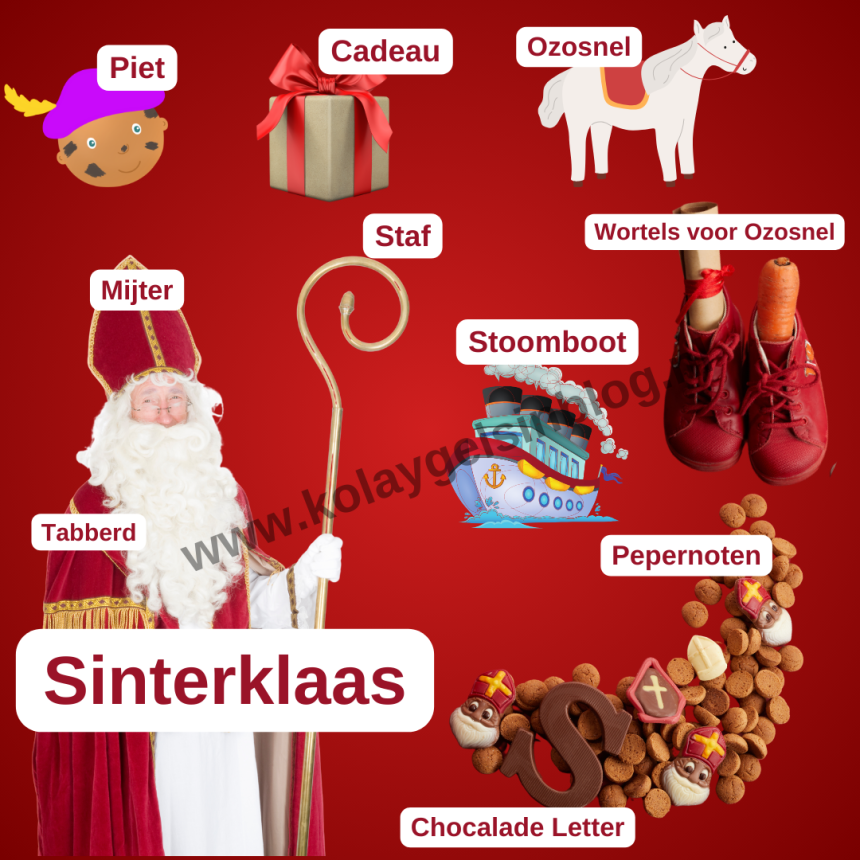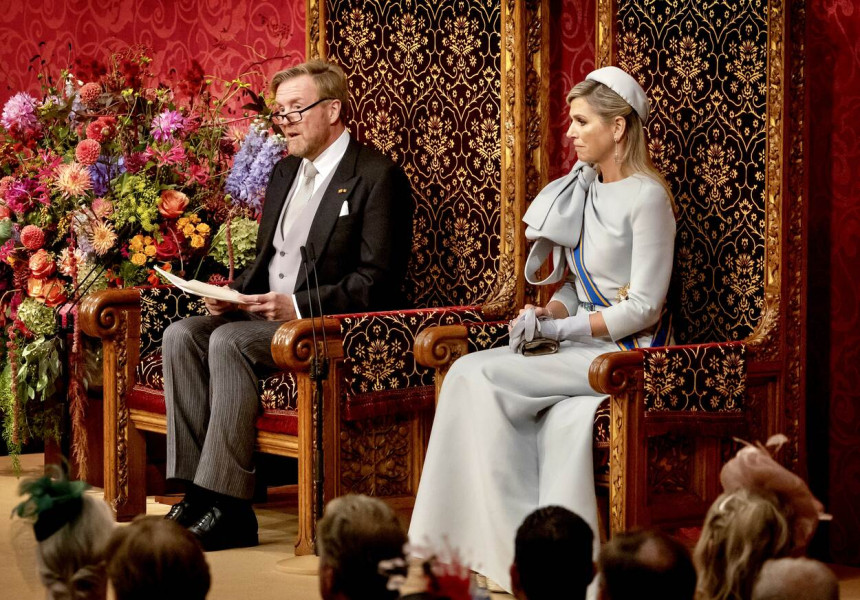
Sinterklaas (November 11 - December 5)
How are the Celebrations Held in the Netherlands?
What is Sinterklaas?
Sinterklaas is one of the most beloved and longstanding traditions in the Netherlands. Considered the origin of the figure of Santa Claus, Sinterklaas is based on Saint Nicholas, the patron saint of children in Christianity. This celebration begins after Sint Maarten (November 11) and is observed throughout the country, including in schools. It culminates on the evening of December 5, known as Pakjesavond, when gifts are exchanged.
Who is Sinterklaas?
Sinterklaas is an elderly bishop figure, easily recognized by his white beard, red cloak (tabberd), the mitre (mijter) adorned with a yellow cross, and his staff (staf). According to legend, Sinterklaas lives in Spain and arrives in the Netherlands by ship every November. Together with his helpers, known as Piet, he distributes gifts to well-behaved children. For children, the arrival of Sinterklaas by his ship, called stoomboot, from Spain, the stories of Piet's kindness, and the adventures of his white horse, Ozosnel (Amerigo before 2019), form an unforgettable part of their imagination.
How are the Celebrations Held?
- Arrival Ceremony (Intocht van Sinterklaas): In mid-November, the grand arrival of Sinterklaas from Spain to the Netherlands is celebrated with a large ceremony. This event is usually held in a major port city and broadcast live on television. For 2024, this event will take place on November 16 in the city of Vianen, starting at 12:00 PM and will be aired on NPO Zapp (NPO 3). However, this is not the only celebration you will witness. Local events take place in every region, allowing every child to see Sinterklaas and receive gifts from him. Piet also distributes pepernoten (spiced cookies). Sometimes they hand them directly to children, or they might hide them in their hoods to entertain them.
- SinterklaasJournaal: To show the children the process of Sinterklaas' journey in 2024, the SinterklaasJournaal news is broadcast every evening at 6:00 PM. You can also send an e-mail to Sinterklaas and Piet from this link.
- Shoes Tradition: Children place their shoes by the fireplace or door before December 5, hoping to receive gifts from Sinterklaas. They fill their shoes with treats like carrots or hay to offer to Sinterklaas' horse, Ozosnel. They believe that while they sleep, Sinterklaas will bring gifts. The next morning, they eagerly find their shoes filled with small surprises. Parents often join in the excitement by leaving a gift for their children. It's up to you how much you'd like to participate in this tradition.
- Pakjesavond (Gift Evening): December 5th is the main day when children receive the gifts they have been wishing for. The night before, they again place carrots, drawings, or food in their shoes. The next morning, they wake up to find that their wishes have come true.

Sinterklaas Effects in Markets and Stores
- Piet Costumes: The costumes of Piet, Sinterklaas' helpers, are among the most recognizable symbols of this period. Hats are also sold separately. If your child enjoys wearing costumes, schools may allow them to wear one for the celebration day. It might be a good idea to buy a Piet costume ahead of time to avoid last-minute shopping.
- Sinterklaas Costume - Staff (Staf) and Mitre (Mijter): Some children prefer dressing up as Sinterklaas rather than Piet.
- Pepernoten and Kruidnoten: Pepernoten, small spiced cookies, are one of the most popular treats during the Sinterklaas period. These are also what Piet distributes in bags to children.
- Chocolate Letters: Giant chocolate letters made in the first letter of someone's name are some of the most popular gifts during this time.
- Coloring Books or Toys: Sinterklaas-themed coloring books and toys also see a surge in popularity during this period.
How are Sinterklaas Celebrations Held in Schools?
The Sinterklaas season is lively and colorful in schools. Children engage in activities like coloring and crafts to celebrate this special day. As December 5th approaches, Sinterklaas visits some schools. On this day, students are often allowed to come dressed in Piet or Sinterklaas costumes. These traditional costume celebrations create a joyful atmosphere in the classrooms. Teachers, like the parents, also participate in nurturing the children's imagination during this period.
Would you like to get more information about us? Click on the link or access all our articles in the About Us category.
Some Sinterklaas videos on Youtube :





